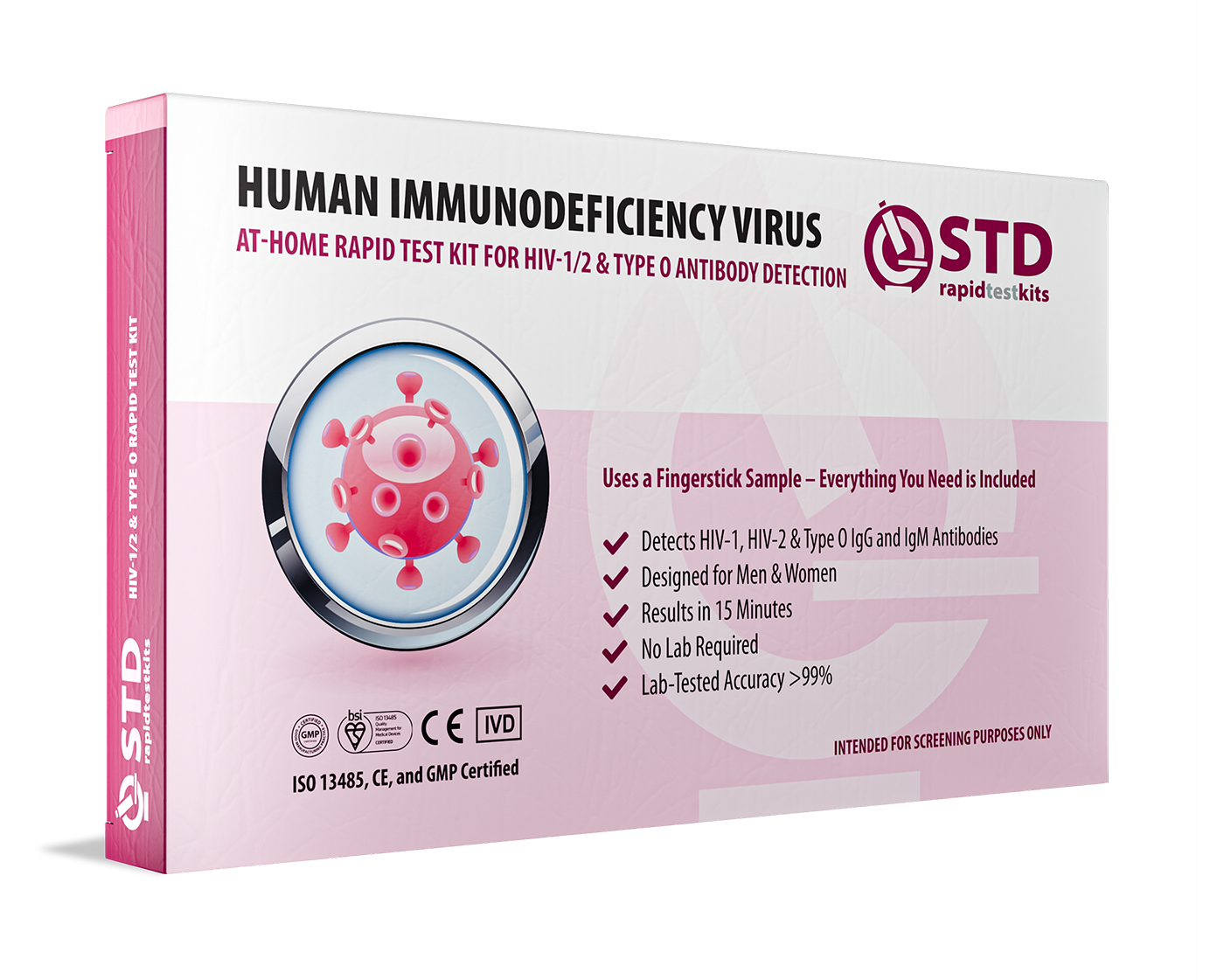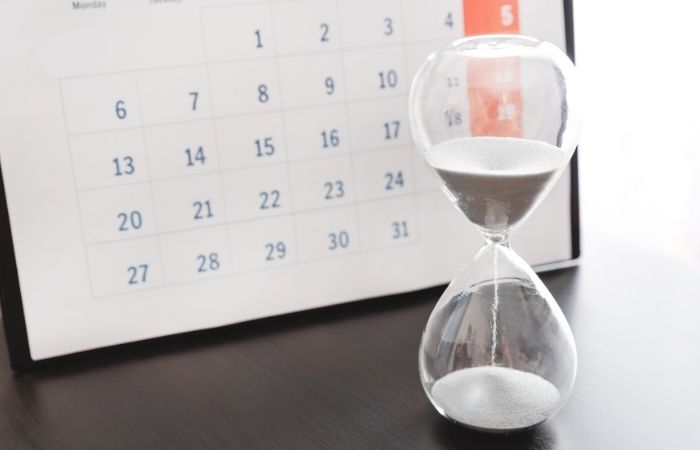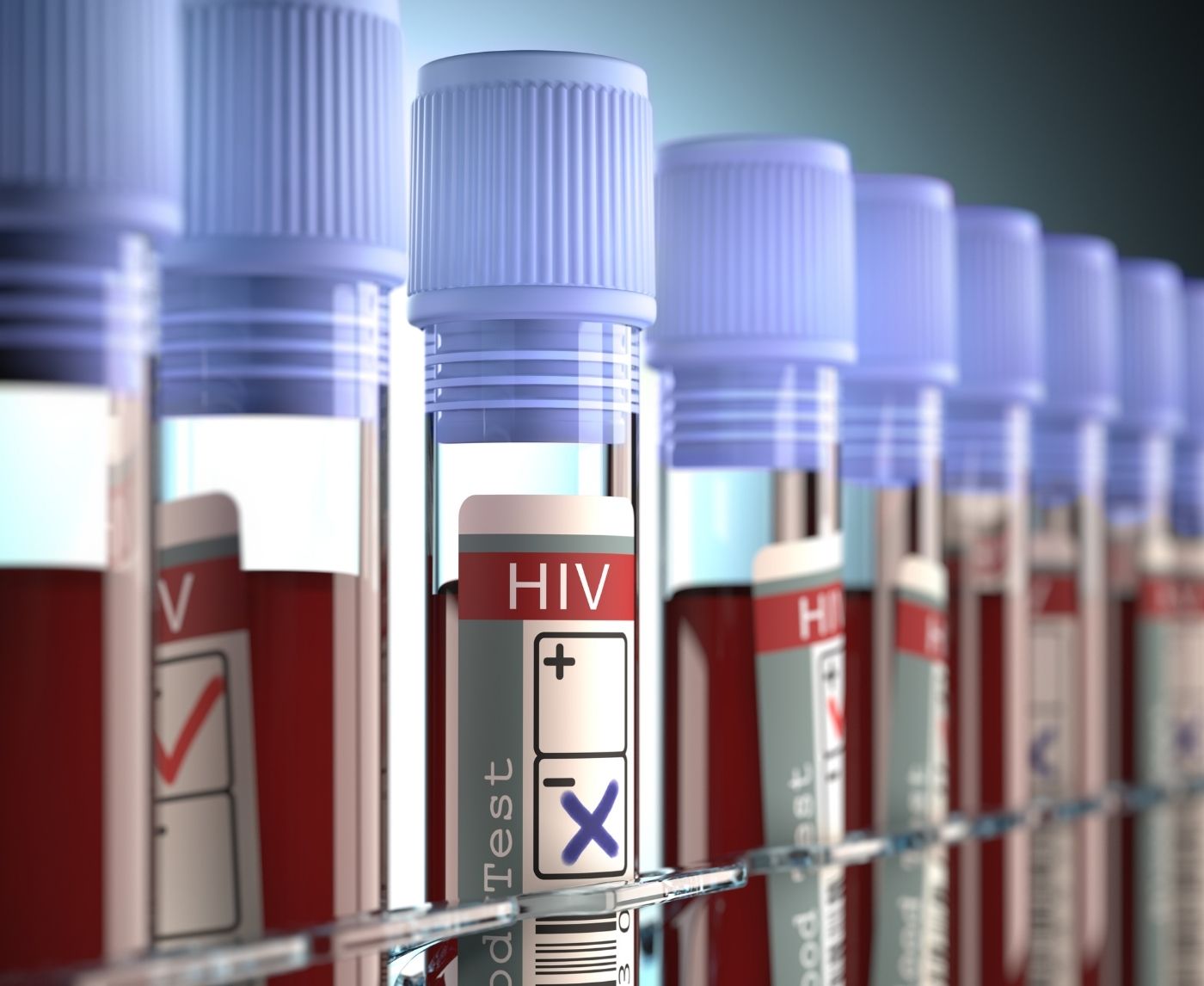Quick Answer: HIV rapid tests are accurate, but they aren't always right. Most of them only find antibodies, which can take weeks to show up. Lab-based HIV tests, especially the 4th generation ones, find both antibodies and the p24 antigen, which means they can find infections earlier. For recent exposures
Why This Isn’t a “One Is Better” Situation
This isn’t about rapid tests being bad and lab tests being flawless. It’s about understanding how each test works, what they’re built to detect, and how the timing of your exposure changes everything.
Think of it like this:
- Rapid tests = speed and convenience
- Lab tests = depth and early detection
Each has a role to play. The trick is knowing when to use which, and what to expect from the results.

People are also reading: Can You Get an STD from a Public Toilet? Here’s the Truth
Types of HIV Tests: What’s Actually Being Measured?
HIV tests don’t all look for the same thing. Some detect antibodies your body creates in response to HIV. Others go deeper, looking for the p24 antigen, a protein that shows up early in infection, or even viral RNA (with advanced lab tests).
| Test Type | What It Detects | Detection Window |
|---|---|---|
| Rapid HIV Test (Antibody only) | HIV antibodies | Usually 3–12 weeks after exposure |
| Lab-Based 4th Gen Test | HIV antibodies + p24 antigen | 2–4 weeks after exposure |
| HIV RNA (NAT) Test | Viral RNA | 10–14 days after exposure |
Table 1. Not all HIV tests are built the same. The earlier you want answers, the more sensitive the test needs to be.
So... Are Rapid HIV Tests Accurate?
Yes, as long as you're not in the window period. When used correctly and after the body has made enough antibodies, most rapid tests are 99% or more accurate.
But here’s the catch: if you test too early, before your immune system has responded, you could get a false negative. That’s not the test failing. That’s biology being sneaky.
Real Talk: If it’s been less than 3 weeks since possible exposure, a negative rapid test might not mean much. You’ll need to wait and retest, or go straight for a lab test with earlier detection power.
What About False Positives?
False positives on quick HIV tests are rare, but they do happen. Most of the time, it's because of
- Technical mistake (like reading the results window wrong)
- Cross-reactivity with other antibodies
- Recent vaccinations or autoimmune diseases
- Test kits that are old or broken
That's why any positive quick test result is seen as a first step. A second, more specific lab-based test, usually a 4th gen blood draw or RNA test, must confirm it. The follow-up is important no matter what you see on that strip.
Understanding the HIV Test Window Period
The window period is the biggest reason people get confused, or misled, by HIV test results. This is the time between when someone is exposed to HIV and when a test can actually detect it. During this time, a person may have HIV but still test negative.
The type of test you choose determines just how early it can catch an infection. Here's how the window period plays out:
| Test Type | Earliest Detection | Most Reliable Time to Test |
|---|---|---|
| Rapid (Antibody Only) | 3–4 weeks | 12+ weeks after exposure |
| Lab 4th Gen (Antigen + Antibody) | 2 weeks | 4+ weeks after exposure |
| HIV RNA (NAT) | 10 days | 2+ weeks after exposure |
Table 2. The earlier you test, the more sensitive your test needs to be. Rapid tests take longer to reach peak accuracy.
This is why timing matters so much. Test too early with the wrong test, and you might walk away with a false sense of security, when what you really need is follow-up testing or a lab confirmation.
The False Negative Nobody Warned Him About
Leo, 29, had unprotected sex with a new partner. He panicked the next day, ordered a rapid test online, and swabbed himself 48 hours later.
“Negative. I felt so relieved,” he said. “But a month later, I started feeling off, fever, fatigue. I went for a lab test and tested positive.”
The rapid test didn’t fail, it was just used too soon. Leo was still in the window period. By the time symptoms kicked in, the virus had already taken hold.
This kind of story happens more than it should. Not because people are careless, but because no one ever explains how testing timelines actually work. That’s what we’re fixing here.
Which HIV Test Is Best Based on Time Since Exposure?
If you’re not sure when or how you were exposed, or you're thinking about testing today, use this chart to match the best test to your situation:
| Time Since Possible Exposure | Recommended Test | Why It’s Best |
|---|---|---|
| Less than 2 weeks | HIV RNA (NAT) Test | Detects viral RNA before antibodies or antigens form |
| 2–4 weeks | Lab-Based 4th Gen Test | Detects p24 antigen + antibodies, improving early accuracy |
| 4+ weeks | Rapid or Lab-Based Test | Antibodies are usually present and reliably detected |
Table 3. Choosing the right test at the right time prevents misinterpretation and unnecessary anxiety.
Rapid Test Pros and Cons (Yes, Let’s Be Honest)
Rapid HIV tests have changed the game in terms of access and privacy. You can test at home. You get answers in 20 minutes. But no test is perfect, and understanding the pros and cons will help you make better decisions.
Pros
- Fast results, usually 20–30 minutes
- Easily available online or over-the-counter
- No blood draw (oral swab or finger prick)
- Great for retesting or peace of mind after window period
Cons
- Can’t detect early infection (within 2–3 weeks)
- Only antibody-based, no p24 antigen or RNA detection
- False positives (though rare) still require lab confirmation
- Easier to misuse or misread at home
If you’re testing out of routine, after a known exposure over a month ago, or just want peace of mind before starting a new relationship, rapid testing might be just right. But if the exposure was recent or high-risk, don’t rely on speed. Go for sensitivity.
Need to Test Today? Don’t Guess, Match the Test to the Risk
If you’re worried about a recent exposure or just want to check in on your health status, the good news is: you have options. But you need the right test at the right time.
Order a confidential rapid HIV test kit here if you’re outside the 4-week mark and want quick clarity. For earlier detection or confirmatory results, follow up with a lab test. Your health isn’t a maybe, it deserves a definite.
Check Your STD Status in Minutes
Test at Home with RemediumHIV Rapid Test Kit

 For Men & Women
For Men & Women Results in Minutes
Results in Minutes No Lab Needed
No Lab Needed Private & Discreet
Private & DiscreetOrder Now $33.99 $49.00
Real-World Testing Scenarios: Rapid vs Lab
Still wondering which HIV test is right for your situation? Let’s break it down with real-world vibes. These are the kinds of situations people don’t talk about out loud, but they’re exactly where testing confusion thrives.
Scenario 1: “It happened last weekend and I’m freaking out.”
If you’re within 5–10 days of exposure, a rapid test won’t help much. Your best bet is a lab-based RNA (NAT) test or waiting at least 2–3 weeks for a 4th generation test. In the meantime, breathe. And avoid assumptions about your partner’s status, only test results tell the truth.
Scenario 2: “I just want to check in before starting something new.”
If it’s been over a month since your last new sexual encounter and you’re symptom-free, a rapid HIV test is a solid option. Fast, easy, and reliable after the window period has passed. This is where rapid tests really shine.
Scenario 3: “I tested positive on a rapid test, what now?”
First: don’t panic. False positives happen. Your next step is a confirmatory lab test. That’ll give you a conclusive result using more advanced technology. Until then, avoid assuming you’re positive or negative. Let the lab do its job.
Rapid Tests Can Provide Peace, or Panic, Depending on Timing
Here’s the emotional trap: people either get false reassurance from testing too early, or they spiral into fear after a false positive without follow-up. Both responses are valid, but both are avoidable.
Key takeaway? Know when you tested. Know what kind of test you used. And if something doesn’t feel right, whether it’s your results or your gut, test again with the right tool.
Testing for HIV isn’t just about biology. It’s emotional. It’s personal. And it should always come with information that makes you feel empowered, not lost.
Common Mistakes That Can Mess With Your Results
Even the best HIV test can’t save you from a bad technique. These are the mistakes we see most often, and how to avoid them:
- Testing too early. Your immune system needs time to respond. Don’t waste a test during the window period and think it’s a final answer.
- Misreading results. Rapid tests have a time window, usually 15 to 20 minutes. If you read it too soon or too late, it could appear negative or “false positive.” Set a timer and follow the instructions exactly.
- Using expired or damaged kits. Storage matters. If your kit sat in a hot car or expired last year, don’t trust the outcome. Get a fresh, sealed test from a verified provider.
- Not confirming a reactive result. A positive result on a rapid test must be confirmed with a lab test. It’s not optional. It’s the standard.
- Ignoring follow-up testing. One test doesn’t cover everything. If you were recently exposed, even a negative result should be followed up weeks later. It’s not overkill, it’s care.
Best HIV Test Based on Your Situation
| Your Situation | Best Test Type | Why |
|---|---|---|
| Recent high-risk exposure (under 2 weeks) | HIV RNA (NAT) test | Detects viral RNA before antibodies form |
| 2–4 weeks after exposure | Lab-based 4th Gen test | Catches early infection through p24 antigen |
| Over 4 weeks after exposure | Rapid or Lab 4th Gen test | Antibodies are present and detectable |
| Routine peace-of-mind screening | At-home rapid test | Convenient, accurate after window period |
| Confirming a reactive rapid test | Lab-based confirmatory test | Provides conclusive diagnosis |
Table 4. The right HIV test isn’t just about timing, it’s about matching your need to the tool.
Want Peace of Mind Without the Clinic Wait?
If you’re ready to test but not ready for the awkward waiting room, there’s a better way. Our HIV rapid test kits ship discreetly and deliver results in 20 minutes. No judgment. No hassle. Just clarity you can trust, when the window period is right.
If you’re unsure whether it’s too early, test now and again in a few weeks. A double-check is better than a double guess.

People are also reading: The Sex Tourism Trap: What You Risk Bringing Home
FAQs
1. Are HIV rapid tests actually reliable?
Yes, if you use them at the right time. Once you’re past the window period (usually 12 weeks after exposure), most rapid tests are over 99% accurate. That’s not “sort of” reliable. That’s “stop Googling and trust the result” reliable. But timing is everything. Use one too soon, and you might get a false sense of security.
2. What exactly is the window period again?
It’s that awkward limbo where HIV might be in your body, but tests can’t quite see it yet. Your immune system hasn’t made enough antibodies (or antigens) for the test to catch. For rapid tests, that window usually lasts 3 to 12 weeks. For lab tests, it’s shorter, often as little as 2 weeks. Think of it as your body’s loading screen.
3. I took a rapid test and got a faint line. Does that mean I’m positive?
Not necessarily. Faint lines can mean a few things, from user error to test degradation to an actual reactive result. The rule? If there's any line, it’s a “reactive” result and you need a lab test to confirm. Don’t panic. Don’t guess. Confirm.
4. Can a cold or flu mess with my results?
Nope. Feeling under the weather doesn’t mean your HIV test will lie to you. The virus and the antibodies it creates are specific. That said, some autoimmune conditions or certain medications can occasionally cause false positives, but a good lab test will always sort that out.
5. What’s the deal with false negatives?
False negatives usually come down to one thing: testing too early. If you take a rapid test a few days or even a couple weeks after exposure, it might miss the infection. It’s not broken, it’s just premature. That’s why smart testers retest after the window period or go straight for a lab test that can catch earlier infections.
6. Can you test positive on a rapid test and not have HIV?
It happens. It’s rare, but not unheard of. That’s why no doctor on earth will give you a definitive diagnosis from a rapid test alone. You’ll need a confirmatory lab test (usually a 4th gen or RNA test). Until then, think of it as a red flag, not a final answer.
7. Why do results need to be read within a certain time window?
Because test strips don’t last forever. A result read too early might miss a developing line. Read it too late and evaporation lines or dried-out chemicals can make it look positive when it’s not. Set a timer. Follow the instructions. Trust the window.
8. What if I’ve had multiple exposures, do I need multiple tests?
Not necessarily, but your timeline gets trickier. You’ll want to test based on the most recent risk event and potentially again after the full 12-week window. If those exposures were spread out, stagger your tests accordingly. This isn’t overthinking. It’s staying sharp.
9. Can I use a rapid test for a partner before we stop using condoms?
You can, and many people do. Just make sure it’s been 3+ months since their last exposure or partner. Otherwise, you're just testing the past, not the present. For the most peace of mind, test together and consider a lab test if it’s early in the timeline. Honesty, meet strategy.
10. Is it overkill to test twice?
Not at all. Testing again, especially if your first test was early or you’re feeling anxious, is smart, not paranoid. It’s your body, your timeline, your peace of mind. A second test isn’t a waste. It’s a reset button on worry.
Rapid or Lab, Clarity Starts With Testing
There’s no “perfect” HIV test, but there is a right test for your moment. Whether you’re calming nerves, confirming a partner’s status, or making sure your peace of mind isn’t built on a maybe, it starts with knowing what your test can (and can’t) tell you.
If it’s been a while and you want quick answers, grab a reliable rapid HIV test. If you’re still in that gray area after a recent scare, follow up with a lab test and let the science catch up with your story.
Either way, you’re not overthinking. You’re taking care of yourself, and that’s never a mistake.
How We Sourced This Article: This article was built on current CDC guidelines, peer-reviewed studies, expert interviews, and firsthand experience from sexual health practitioners. Our goal is to help you understand when HIV test results are reliable, and when a second test could make all the difference. Below, we’ve highlighted some of the most relevant and reader-friendly sources.
Sources
2. Getting Tested for HIV — CDC
3. How Accurate Are Rapid, Point-of-Care Tests for HIV? — AIDSmap
4. Head-to-head Comparison of Rapid vs Laboratory HIV Tests — NCBI Books
5. Rapid Versus Laboratory-Based Testing for HIV and Hepatitis C — PMC
About the Author
Dr. F. David, MD is a board-certified infectious disease physician focused on HIV testing, prevention, and harm-reduction strategies. His writing translates complex science into human-first health guidance for real people in real situations.
Reviewed by: Sienna Ko, RN, MPH | Last medically reviewed: October 2025
This article is for informational purposes only and is not a substitute for professional medical advice, diagnosis, or treatment.










